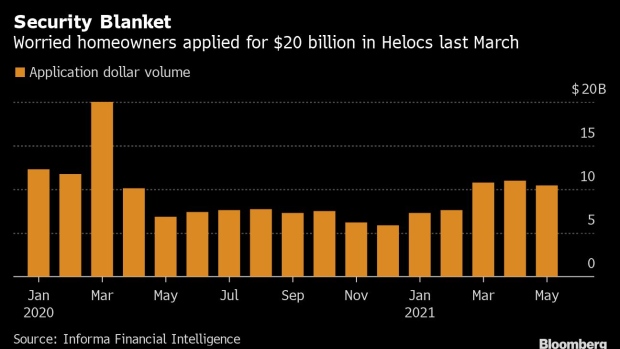
Billionaire Stephen Ross Believes in South Florida—and Is Spending Big to Transform It
The Related Cos. founder is following the money flowing south by bringing his influence to everything from real estate to schools and health care.
Latest Videos
The information you requested is not available at this time, please check back again soon.

The Related Cos. founder is following the money flowing south by bringing his influence to everything from real estate to schools and health care.

Initial data on US gross domestic product for the first quarter of 2024 is set to confirm an ongoing economic boom amid a tailwind from surging immigration.

A South Florida office skyscraper from Related Cos. landed new finance tenants, including a John Paulson business and a private equity firm that counts Mark Bezos as a founding partner.

Oracle Corp. is moving its headquarters out of the city. Tesla Inc. is pulling back after a rapid expansion. Almost a quarter of commercial office space is vacant, and nowhere in the country have residential real estate prices fallen further from their pandemic peak.

Mortgage rates in the US increased for a fourth straight week.
Jun 25, 2021
, Bloomberg News
U.S. homeowners spooked by the burgeoning pandemic last spring rushed to tap equity in their properties for a hit of ready cash -- and equally wary banks tightened credit or halted lending in response.
In the past year, monstrous demand for homes amid a scarcity of listings pushed up prices to the point of giving owners more collective equity than they’ve ever had before: US$8.1 trillion, according to data provider Black Knight Inc.
But despite the roaring housing market and economic recovery, lenders are still keeping a tight grip on home equity lines of credit, or Helocs, a primary way borrowers can turn value stored in a home into cash. Chalk it up to lessons learned from the last real estate crash, and other options for homeowners that may be less costly given today’s historically low mortgage rates.
“Many banks are still wary of the risks of making home-equity lines of credit,” said Keith Gumbinger, vice president at mortgage-information company HSH.com. “For both banks and borrowers, cash-out refinancing can offer a very viable alternative for accessing the growing equity in their homes.”
Demand for Helocs has tumbled since the beginning of the pandemic, with application volumes last month totaling about half that of March 2020, when homeowners raced to obtain credit lines, according to data from Informa Financial Intelligence.

A Heloc functions like a credit card, with a consumer’s home equity serving as collateral. It makes sense for people who want to be able to tap into a reserve of credit as they need it instead of receiving a lump sum, as with a cash-out refi or other types of loans. That made it logical for homeowners to reach for Helocs as a security blanket while the coronavirus swept across the U.S.
The catch is that for banks, a Heloc is riskier than some other forms of lending because it’s a second lien -- meaning it would be paid off after primary-mortgage obligations, creating the potential for losses if something goes wrong.
“A lot of lenders even before the pandemic hit were kind of reluctant to be in that second-lien position,” said Tendayi Kapfidze, chief economist at online loan marketplace LendingTree. “And then certainly when the pandemic hit, that became a very significant risk factor that many lenders didn’t want to be exposed to.”
That skittishness dates back to the financial crisis, when plummeting home values lashed banks with billions in second-lien losses. Reforms introduced after the crash ensure underwriting is sturdier than it was back then, with homeowners facing stricter limits on the amount of equity they can borrow against, as one example.
Even so, some of the largest lenders opted to pull away from the Heloc market last spring rather than stick around and learn whether the potential economic fallout of the pandemic could lead to similar losses.
For the most part, that retreat has yet to reverse. JPMorgan Chase & Co. isn’t accepting applications for Helocs, according to its website. Wells Fargo & Co. stopped taking them after April 2020 and hasn’t changed course since, the company said in an emailed statement, without specifying why its suspension remains in place.
An exception is Bank of America Corp., which tightened standards for Helocs last year and has since returned to pre-pandemic guidelines. Client interest in the credit lines has picked up as the country reopens and consumer confidence improves, a bank spokesperson said.
Homeowners aren’t exactly desperate for access to Helocs. They’ve been favoring cash-out refinancing, in which they get an infusion of funds -- to pay bills or finance remodeling projects, and the like -- while replacing an old mortgage with a new one with a larger balance.
Because of the additional risk, lenders tend to charge more in interest for Helocs. The average Heloc rate is 4.11 per cent, compared with 3.18 per cent for 30-year fixed-rate mortgages, Bankrate.com data show. Even if a lender tacks on a quarter of a percentage point for a cash-out refi, the rate is still significantly lower, making it a more-appealing option for many borrowers, according to Greg McBride, chief financial analyst at the firm.
While many of the largest banks keep Helocs at arm’s length, smaller lenders are still active in the market. M&T Bank tightened its standards for the credit lines but continues to issue them, said Joe Lombardo, head of consumer products at M&T.
With mortgage rates near record lows, cash-out refis are “taking up a lot of the demand for debt consolidation and home improvements that we would traditionally see home equity being a fit for,” said Lombardo, whose company was the 13th-largest Heloc lender in the U.S. last year.
“The larger lenders are sitting on the sidelines still,” he said, “because there isn’t a huge need from a consumer standpoint to get back in.”